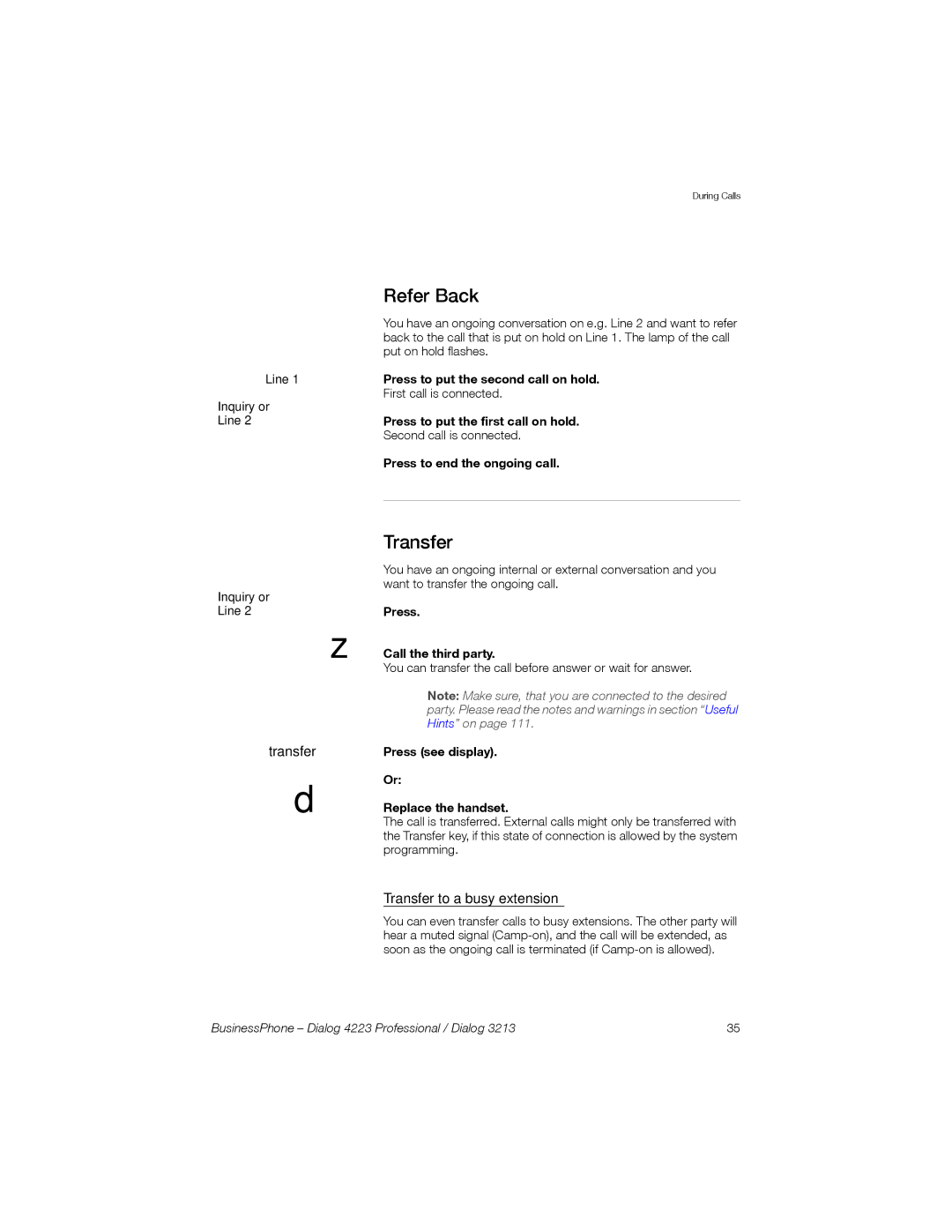Dialog 3213, Dialog 4223 specifications
The Sony Ericsson Dialog 4223 and Dialog 3213 are two notable communication devices that have made a significant impact in the realm of business telephony. These models are characterized by their user-friendly interfaces, robust build quality, and technology-rich features that cater to both professional and personal use.Starting with the Dialog 4223, this model is designed with practicality and functionality in mind. It is equipped with an LCD screen that displays essential information clearly, making it easy for users to navigate through options and settings. The Dialog 4223 supports a variety of telecommunication features such as call forwarding, call waiting, and voicemail that empower users to manage their communications effectively. Its ergonomic design, along with dedicated function keys, enhances the user experience, allowing for quick access to frequently used functions.
Additionally, the Dialog 4223 utilizes conventional analog and digital technology, ensuring compatibility with a wide range of telecommunication infrastructures. This model features high-quality audio performance, which is essential for business environments where clarity in communication is paramount. The Dialog 4223 also supports headset connectivity, making it suitable for hands-free operation, thereby promoting multitasking during calls.
On the other hand, the Dialog 3213 model is tailored for users seeking a more simplified and compact telephony solution. Although smaller in size, it retains a suite of essential features presented in an intuitive format. The Dialog 3213 includes a user-friendly keypad and a clear display, making it accessible for users of all skill levels. This model is particularly ideal for smaller office setups or as a supplementary phone in a larger environment.
The Dialog 3213 focuses on core functionalities, offering features such as speed dialing and a built-in directory for storing contacts. It also benefits from the same robust audio technology found in its counterpart, ensuring that conversations are crisp and easily understood. Like the Dialog 4223, the Dialog 3213 is compatible with various telecommunication systems, thus providing flexibility for users.
Both models reflect Sony Ericsson's dedication to delivering high-quality communication devices that cater to the diverse needs of users. They blend functionality with reliability, making the Dialog 4223 and Dialog 3213 invaluable tools in any business setting. Overall, these devices exemplify the ideal balance between technological advancement and everyday usability, continuing to serve as trusted options within the telephony landscape.
